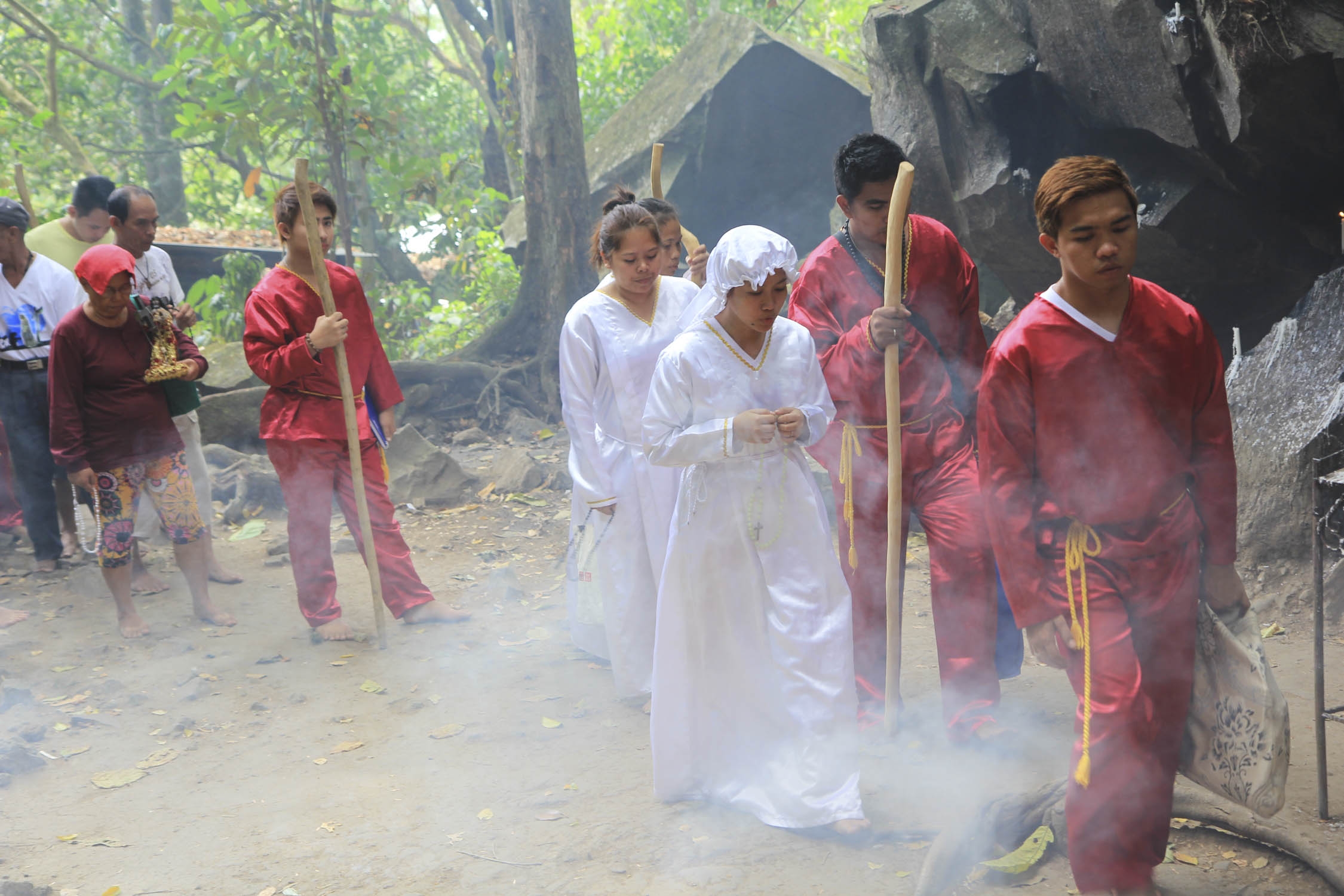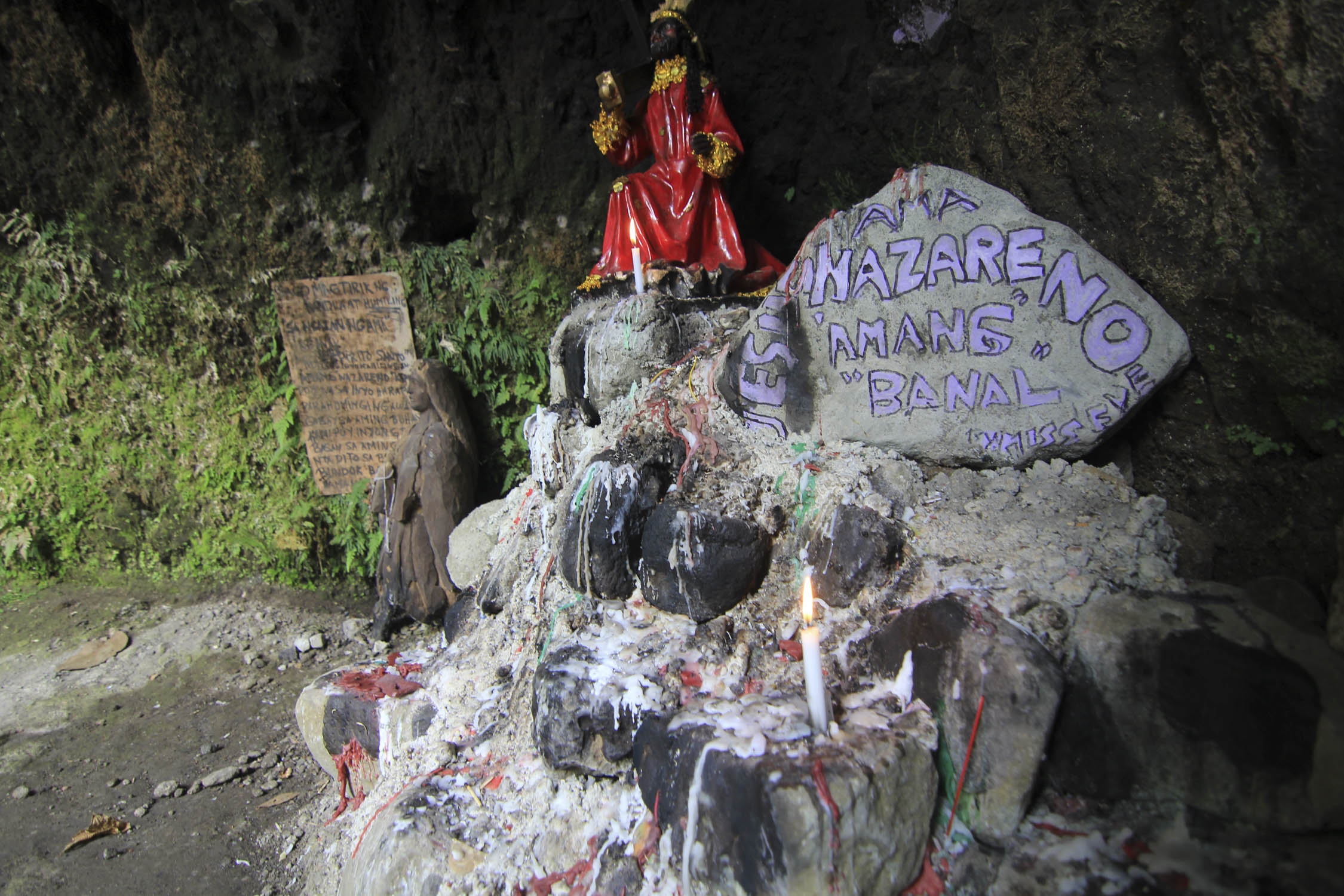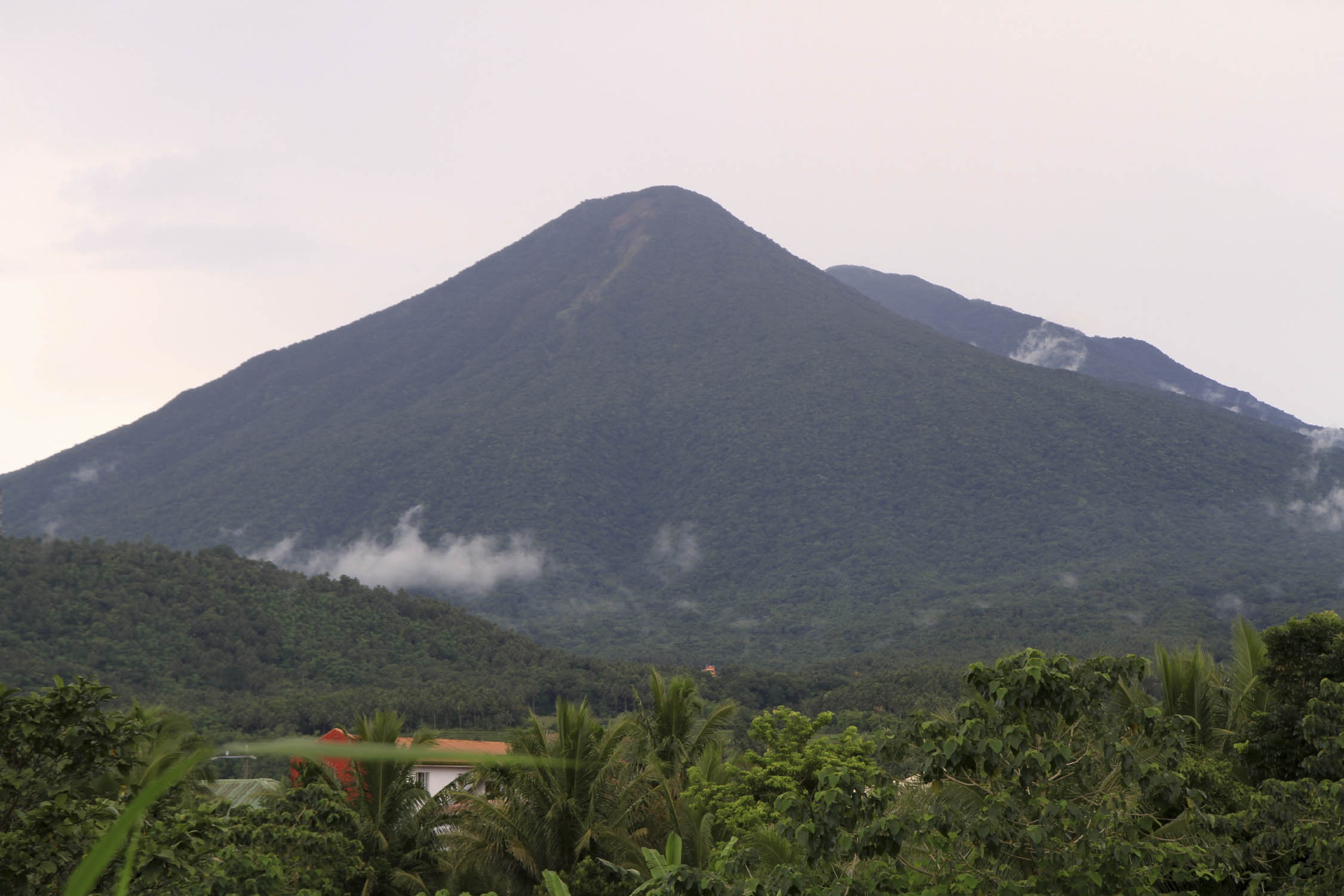Banahaw: Mount of rituals given more time to heal

PILGRIMS Devotees visit “holy spots” on Mt. Banahaw to pray for forgiveness of sins, seek divine intervention to overcome life’s
challenges, experiencemysticalmoments or have amoment of peace. —PHOTOS BY DELFIN T.MALLARI JR.
DOLORES, Quezon — For pilgrims and nature trippers, Mount Banahaw is a sanctuary and a bottomless well of holiness, mysticism and ineffable peace.
During the Holy Week, believers trek to “puestos,” or “holy spots,” to pray for forgiveness of sins, seek divine intervention to overcome life’s challenges, experience mystical moments or have a moment of peace.
Banahaw straddles the municipalities of Lucban, Tayabas, Sariaya, Candelaria and Dolores in Quezon province and parts of Rizal, Nagcarlan, Liliw and Majayjay towns and San Pablo City in Laguna province.
There are now more than 100 puestos, mostly found in Dolores, 170 kilometers southeast of Manila, particularly in the villages of Kinabuhayan and Santa Lucia.
Pioneer
Magtanggol Barrion, 56, a member of the Suprema de la Iglesia del Ciudad Mystica de Dios, or Mystica, one of several religious sects based on Banahaw, says the mountain had to be revered because of its mystics and natural spring of deeper spiritualism and faith.
Its best known “religious hermit” was Agripino Lontok or “Mamay Pinong,” who discovered the mountain as a sacred ground for those in search of spiritual strength and righteousness, according to Barrion.
Lontok pioneered the formation of puestos, guided by a huge bird known as “Ibong de Custodio,” he says.
Some puestos are landmarks, caves and waterfalls named after saints.
Barrion names some of the early puestos in Santa Lucia as “Santo Pepe” (huge stone), “Santa Lucia” (waterfall), “Hilamusan” (basin-like stone with water), “Balon ni San Isidro’’ and “Balon ni Santong Jacob.”
Another, “Prisintahan,” is a cave with two small caverns known as San Pablo and San Pedro.
“This is where [devotees] introduce [themselves] and make a wish that their names be included in the ‘listahan ng buhay’ (life’s list),” Barrion said.
Others bear names that reflect the trials and tribulations of Jesus Christ, such as “Pinaggapusan,” “Kinadapaan,” “Yapak” and “Tubig ng Kinabuhayan.”

HOLY SPOT One of the “puestos” or holy spots on Mt. Banahaw that pilgrims visit during Holy Week. Most pilgrims spend a whole day of prayers at different puestos in a ritual called “pamumuesto.”
Majestic panorama
As a pilgrim ascends the mountain, he has to pass by the waterfalls of “Kristalino” and “Suplinang Tubig,” a small pond of still water called “Salaming Bubog,” and the “Kuweba ng Diyos Ama.”
At the summit are “Una,” “Ikalawa” and “Ikatlong Dungaw,” and more puestos are below the deep mountain crater, such as “Pitong Maria,” “Tubig ng Dugo at Gatas” and “Tubig ng Apdo.”
According to Barrion, modern-day pilgrims have added places and gave saintly identifications.
Most pilgrims spend a whole day of prayers in different puestos in a ritual called “pamumuesto.”
A true believer must bring a canister for his own urine and waste as a gesture of respect to the sacredness of prayer sites, Barrion says. “After praying, we will be leaving the spot without any piece of our dirt behind. Not even a morsel of rice.”
Once the rituals are completed in the different “holy spots” in Kinabuhayan and Santa Lucia, devotees should climb the mountain to pray at the peak to cap the spiritual journey.
It usually takes several years to finish the “pamumuesto” ritual.
Sects
According to Barrion, Lontok did not establish his own religious sect, but his faith in the spirituality of Banahaw has inspired followers to form their own groups to continue his teachings and spiritual practices.
Aside from Mystica, several religious communities have been established in Dolores, Tayabas and other parts in Laguna, with their own beliefs, spiritual theories and practices.
In 1936, Agapito Illustrisimo founded the religious sect Tatlong Persona Solo Dios and established a settlement with a church in Kinabuhayan.
“Since the time of my grandfather, whenever we were ordered by a ‘message’ from the Supreme Being, we’ve always been collectively praying in different puestos in Banahaw,” says Obet Cabalag, 45, one of the sect members.
Mar Fermin, a member of the Sagrada de Familia from Binangonan, says his group goes to Banahaw every year “to pray and say our thanks, ask for forgiveness and to heal our illnesses.” Members pitch tents and stay on Banahaw until Palm Sunday.
In 1927, Anghel Lorenzo, or “Apo Anghel” to his followers, formed the Kapatiran ang Likas na Kaliwanagan (KALK) in Barangay Camaysa at the foot of Banahaw in Tayabas. He named the site “Templo Rizal.”
“KALK is a native faith comprising God the Father, nature and the love for the heroes of the country,” says John Valdeavilla, a historian and researcher from Tayabas.
Other pilgrims aim to fulfill their vow to kiss Banahaw’s hallowed ground and scale its peaks as a sacrificial act in exchange for blessings.

MYSTIC MOUNTAIN Pilgrims and mountaineers still manage to climb Mt. Banahaw despite its closure to the public. Forest
guards, aided by volunteers, policemen and soldiers, will continue to impose the ban this Holy Week to help wildlife
recover from years of abuse.
Supernatural
Believers in the supernatural also come to Banahaw in search of “amulets.” They want to experience paranormal or mystical moments while in meditation or to recharge their “gifts” to heal the sick.
Urbanite nature trippers make a beeline to escape from the stressful ways of the metropolis.
“It indeed left a lasting impression. I would say a spiritual experience, where a kind of inner peace descended on me,” said Noel Suministrado, 59, a pastor, in a recent online interview from Canada.
He first scaled Banahaw from the Dolores side in 1993, and remembered it as where he “wrestled life’s questions and found answers as well.”
In 2004, the Department of Environment and Natural Resources (DENR) sealed off the bosom of Banahaw to rehabilitate the mountain after years of abuse by pilgrims and trekkers. It declared the peaks off-limits to the public.
Before its closure, more than half a million visitors had climbed Banahaw every Holy Week, leaving behind tons of trash and destruction.
In 2009, Congress passed Republic Act No. 9847 declaring Banahaw and nearby Mount San Cristobal a protected landscape in Quezon and Laguna provinces.
The Protected Area Management Board (PAMB) has designated the villages of Kinabuhayan and Santa Lucia as a “multiple-use zone,” where camping, praying and other religious activities are allowed in certain areas.
Last year, the number of visitors who came for their annual commune with nature and “spirits” reached more than 40,000.
The closure was supposed to remain in effect until Feb. 19, 2019. But the PAMB decided to extend the prohibition until such time that local governments and villages on Banahaw’s slopes “are fully prepared, trained and ready.”
Despite the prohibition, some managed to sneak in via new trails established by unscrupulous villagers and mountaineers, says Salud Pangan, park area superintendent.